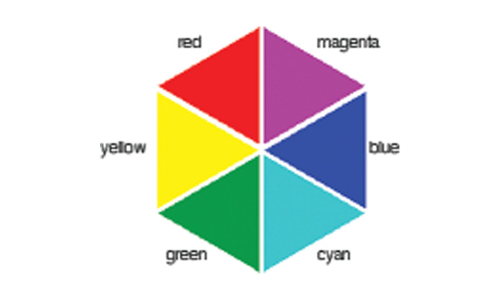Live
- MyVoice: Views of our readers 20th April 2024
- Is US Prez weighing climate emergency declaration soon
- ‘AP people’ve made up their mind on double engine govt’
- Caught unawares: Dubai must brace for future storms
- DEO suspends teacher accused of sexual assault
- PM ‘cursing’ Congress out of despair: Maharashtra Cong Chief
- Applications are invited for Junior Colleges Scheme District Scheduled Castes Development Officer Ramlal
- A nomination was filed on the second day for the Nagar Kurnool parliamentary seat
- SP Gaikwad inspected the Telangana Amarnath Saleswaram Jatara yatra arrangements
- Rahul Gandhi's decision to contest from Wayanad shows 'lack of confidence': BJP President Nadda
Just In

In art, colour is very important The color wheel is often used to explain the relationship of different colours to one another In this way, artists know what colours look good with each other and how to mix paint to produce more colours
In art, colour is very important. The color wheel is often used to explain the relationship of different colours to one another. In this way, artists know what colours look good with each other and how to mix paint to produce more colours.
All possible color combinations can be made by mixing just three primary colors with white and black. Artists use a colour wheel that has the three primary colours — red, yellow, and blue — and three secondary colours — orange, green, and violet — as well as the tertiary colors that are in between, such as blue-green. In this project, see the bright colors of the rainbow disappear right before your eyes as you learn about the properties of light and how we see colour.
What You Do: Draw a circle: Use the cereal bowl or plastic lid to trace a circle onto one of the paper plates. Find the center of the circle: With a pencil, use a ruler to draw a straight line that touches the circle and extends to the edges of the paper plate. Do this again on the opposite side of the circle so that the lines intersect near the top of the plate. Then, do the same thing – draw two straight lines on each side of the circle that intersect — at the bottom of the circle. Now, line the ruler up with the left and right intersections and very lightly make a one-inch line in the center of the circle.
Then, align the ruler with the top and bottom intersections and lightly draw a one-inch line in the center of the circle. Where the two short, light lines intersect is the center of the circle! Put a dot there and erase one of the short, light lines inside the circle. Draw lines in the circle to make six equal parts: Place your ruler on the remaining light line, aligning it with the intersecting lines again, and draw the line to extend from the center dot to the edge of the circle.
Put the 0-degree mark of the protractor (not the 0-inch mark, but the 0-degree mark of the protractor) on the center dot, with the straight edge along your line. Find 60 degrees on the curved edge and make a dot outside the circle. Use the straight edge to make a light line between the center dot and 60-degree dot. Again, place the 0-degree mark on the center dot, align the straight edge on the line you just made, make a dot outside the circle at 60 degrees. Repeat until you have lines dividing the circle into six equal parts.
Colour each section: Choose a section to start with and colour it purple. Then, move to the next section and color it blue. Continue around the circle with green, yellow, orange, and red, in that order. Cut out the circle with scissors.
Attach the colour wheel to the eraser of a pencil. Use a thumbtack or push pin to make a hole in the center of your colour wheel, and stick it into your pencil eraser. Spin the color wheel: Lay the pencil on the edge of a table with the colour wheel hanging over the edge.

© 2024 Hyderabad Media House Limited/The Hans India. All rights reserved. Powered by hocalwire.com







